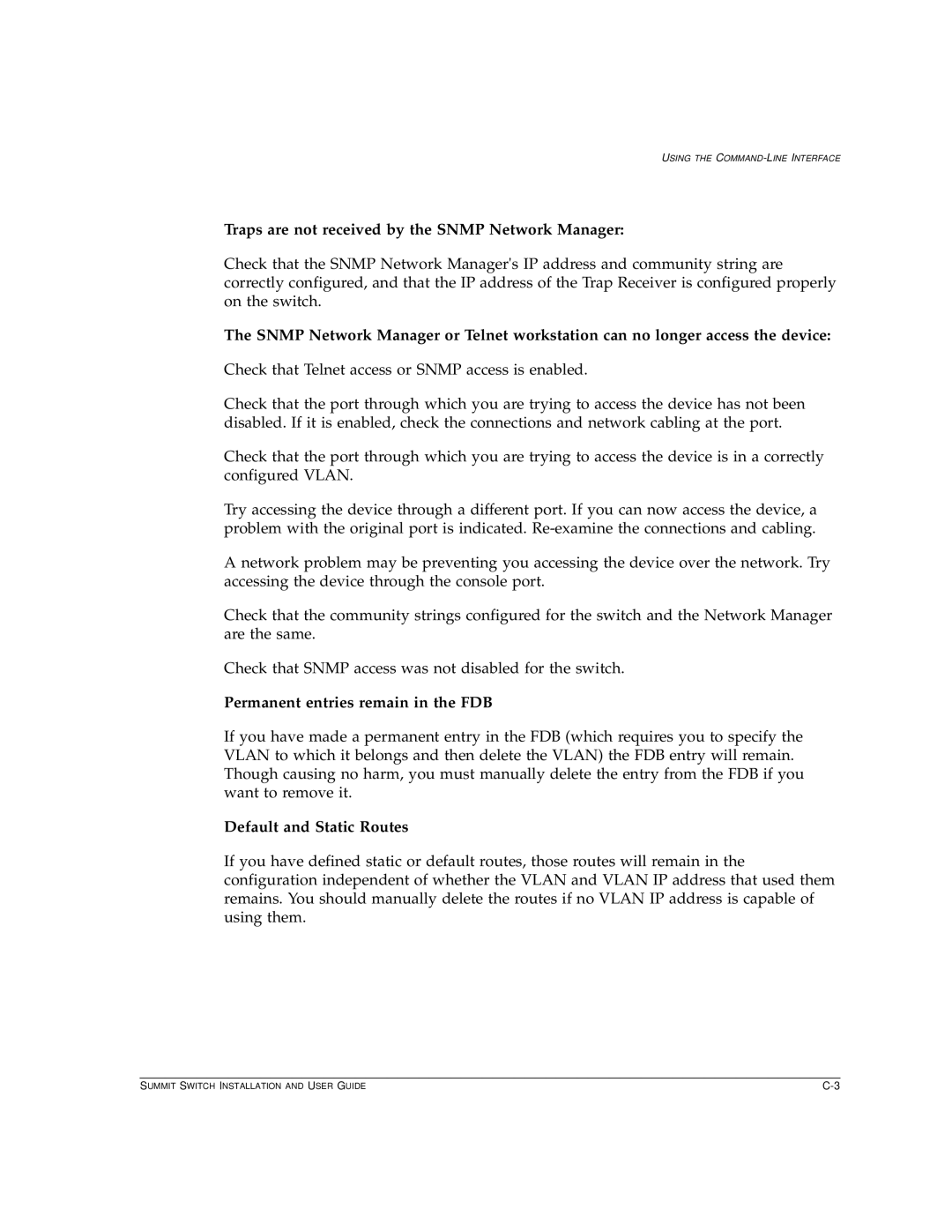USING THE
Traps are not received by the SNMP Network Manager:
Check that the SNMP Network Manager's IP address and community string are correctly configured, and that the IP address of the Trap Receiver is configured properly on the switch.
The SNMP Network Manager or Telnet workstation can no longer access the device:
Check that Telnet access or SNMP access is enabled.
Check that the port through which you are trying to access the device has not been disabled. If it is enabled, check the connections and network cabling at the port.
Check that the port through which you are trying to access the device is in a correctly configured VLAN.
Try accessing the device through a different port. If you can now access the device, a problem with the original port is indicated.
A network problem may be preventing you accessing the device over the network. Try accessing the device through the console port.
Check that the community strings configured for the switch and the Network Manager are the same.
Check that SNMP access was not disabled for the switch.
Permanent entries remain in the FDB
If you have made a permanent entry in the FDB (which requires you to specify the VLAN to which it belongs and then delete the VLAN) the FDB entry will remain. Though causing no harm, you must manually delete the entry from the FDB if you want to remove it.
Default and Static Routes
If you have defined static or default routes, those routes will remain in the configuration independent of whether the VLAN and VLAN IP address that used them remains. You should manually delete the routes if no VLAN IP address is capable of using them.
SUMMIT SWITCH INSTALLATION AND USER GUIDE |
